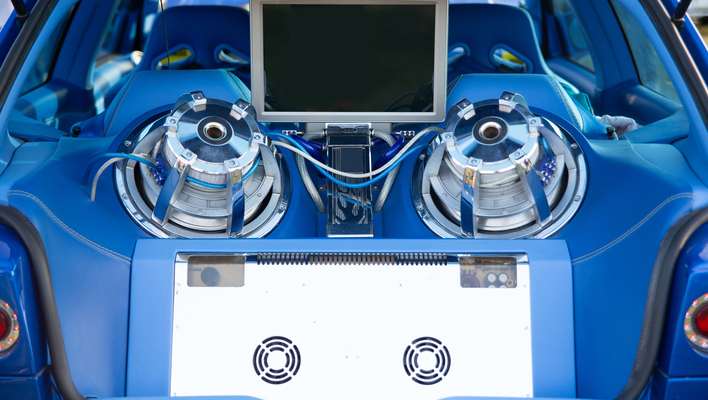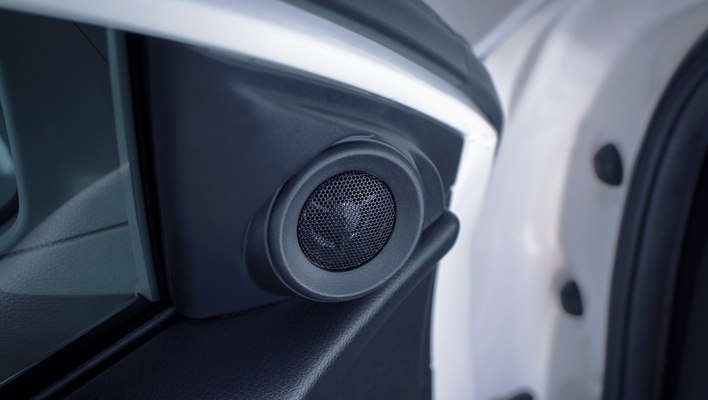Are you looking for an easy way to hook up your tweeters without a crossover? Here is a simple step-by-step guide that will enable you to do this with or without experience.
Did you know that it is possible to install tweeters without crossover? You may be thinking that it is impossible but in the real sense, tweeters without crossover work very well when installed correctly.
For starters, they do not need to be connected with any other speaker for the music to reach your ears. Moreover, they help improve sound quality by providing clear highs and smooth mid-range frequencies. Tweeters without crossover are also compatible with any vehicle out there.
Although installing tweeters without a crossover is not necessarily an expert’s job, it requires some basic knowledge of your vehicle’s electrical system. But before going any further, it’s important to look further into what tweeters are and what they do for your music experience.
What Are Tweeters?
Tweeters are high-frequency loudspeaker drivers designed to reproduce the higher frequencies from an audio signal. They are typically smaller in size and produce frequencies ranging from 3 kHz- 20 kHz.
Tweeters possess small cones that enable them to vibrate quickly and accurately with very little amplifier power. Their primary purpose is to make your sound system highs much louder, clearer, and richer than ever before.
They work by converting electrical energy into sound waves through electromagnetism. Tweeters without crossover are a relatively new technology that has gained massive popularity in the recent past due to its perfect sound quality and ease of installation.
How To Install Tweeters Without Crossover
Suppose you already have your tweeter of choice; at this point, you can go ahead and use the following steps to install the given tweeter without crossover in your car.
Step 1: Gather all the needed materials
Some tools such as a soldering gun, nuts, wrench, and bolts are a must-have for the installation process to run smoothly. It would help if you got them beforehand and, as you do these, ensure they are of the right quality and measurements to avoid last-minute disappointments.
Step 2: Perform the needed safety precautions
Your tweeter installation process can be hazardous if not handled carefully. To avoid certain dangers, for instance, short-circuiting, ensure to switch off the main supply and ensure no wires are touching each other or any part of the circuitry.
Cutting off power requires that you disconnect the negative cable in your car’s battery. Before doing this, turn off your car’s ignition and put on protective clothing to keep safe in case of spillage of the corrosive chemicals.

Step 3: Locate your car’s speakers.
Installing tweeters without crossover in your car requires that you first choose where to install them. This could mean that you have to remove some panels in the chosen location. You can install your tweeters on your car’s upper door, the dash, the sail panel, or the “A” pillar. The location you choose depends on your preference, expertise, car model, and energy you are willing to dedicate to the task.
If you, for instance, decide to have the tweeters on your car’s dashboard, you must first remove all the panels from the dashboard to enable you to get to your car’s speakers.
Step 4: Install the tweeters.
After removing the necessary panels in the location of your choice, it’s time now to install the tweeters. You can decide to either flush mount, surface mount, or bottom mount for your tweeters.
How To Flush Mount Your Tweeters
Flush mounting the tweeter on a door panel is one of the most common methods of tweeter installation today. This is because it’s easy to carry out, and it brings the sounds closer. First of all, you need to drill a hole that’s as wide as your tweeter into your door panel.
Next, put the base cup into the hole and attach the tweeter inside it. You can use nuts, bolts, or plastic strips to ensure that your tweeters are firmly held in position. This prevents them from coming out when you’re driving at high speed.
How To Bottom Mount Your Tweeters
This is one of the best methods of tweeter installation because it does not require you to drill any new hole. In this method, you use a wrench to affirm the tweeter in the existing speaker grills.
How To Surface Mount Your Tweeters
This method is commonly used in cars that don’t possess enough deep places to drill new holes for installing the tweeters. It entails mounting the tweeter on top of a chosen location and using a screw to hold it inside a cup.
Step 5: Wire the tweeters
This requires that you disconnect the speaker leads and connect them to your new tweeters. As you do this, be very keen on polarity as incorrect wiring can damage your car’s audio system. You can use a multimeter to check the polarity, and once you are sure it’s correct and the sound is excellent, weld the wires together using a soldering gun.
How To Install Tweeter Speakers
Tweeter speakers are a common addition to car audio systems because they bring out the high frequencies. The installation process for installing tweeter speakers varies depending on what types of components the audio system consists of and whether or not it’s a preexisting or new audio setup.
This process can be done in several ways depending on the speaker system you are using, i.e., coaxial, component, or satellite/subwoofer.
Coaxial speakers have a single woofer and tweeter in the same housing. Installing tweeter speakers with this type of speaker is very easy because both the tweeter and woofer are already mounted in a single housing.
All you have to do is plug a new speaker wire from the tweeters into the corresponding position on the back of the car audio system’s receiver or amplifier.
Component speakers are different from coaxial because they require a separate wire for each driver, i.e., midrange, bass, and treble. Installing tweeter speakers with component speakers requires installing a crossover filter that separates low frequencies from high frequencies and channels them to appropriate drivers inside each speaker cabinet.
Although installing tweeter speakers with component speakers is more complicated than installing them with coaxial speakers, the results are often far better in sound quality and clarity.
Satellite/subwoofer speaker systems consist of two main component satellite speakers, which handle high frequencies and reproduce most of the music’s melody, and subwoofers which handle low bass sounds like drums or deep-toned vocals.
Installing tweeter speakers with these speaker systems involves connecting a new speaker wire to the satellites tweeters or horns (the part where high frequency produces sound). Tweeter installation for speaker systems like this is easy because there’s already one speaker per frequency range. So, you can easily add a second speaker.
Installing tweeter speakers with this system doesn’t require any special hardware or additional crossovers. There’s also a downside in that, such an installation often results in the satellite speakers being overpowered by the subwoofers due to their lack of power rating.
Speaker systems like this are not ideal for installing tweeter speakers because there’s already only one woofer and one tweeter per frequency range. However, many computer audio setups have more than one satellite speaker( usually two) and zero subwoofers.
Installing tweeter speakers with this kind of setup is pretty straightforward: a new set of wires must be run from the tweeters to the receiver/amplifier using an RCA cable, soldering, or simply wiring the two together.
Using this method produces a much more evenly balanced sound than if you were to use a satellite/subwoofer system in place of separate satellites and subwoofers.
When installing tweeter speakers, an important thing to remember is that even though they fill out high frequencies, their primary purpose is not to produce high volumes. Most tweeters can’t handle high volume and will burn out if pushed too hard.
How To Hook Up Tweeters
Tweeters can be hooked to your vehicle’s audio system in several ways. Here are some suggestions:
Method 1: You can hook them directly using cable ties or screws. If you decide to use this method, you must secure the wires to prevent interference when driving at higher speeds. The number one limitation with this method is that it doesn’t give you extra power in sound quality enhancement.
Method 2: You can also use an adapter that will allow you to connect two sets of tweeters with one signal source. In simple terms, this entails connecting both tweeters with one amplifier. Hooking up your tweeters in this manner increases audio quality by amplifying high frequencies.
Its biggest limitation is that your car ends up using more power, and this in turn forces your engine to consume more gas in the long run.
Method 3: Some DIY audio pros splice their speaker wires together using a pencil-sized plug on one end of the wire and small screws on the other. This requires that you get two sets of tweeters, four wires each (red +/ white -), and drill holes in them to contain them in one plug and then insert them into your car’s audio system wires. Although this method saves you from expensive amplifiers or special adapters, it doesn’t improve sound quality or amplify high frequencies.
Method 4: you can also decide to go the simple way which entails buying a set of tweeters and speaker wires and then connecting them directly to the battery terminals (red+/ black -) of your car’s audio system.
Even though this method guarantees improved sound quality, it might cause damage to the other parts of your vehicle because the tweeter draws too much power from the battery.
Also Read: Pre-Out vs Line Out [Detailed Guide]
Final Word
Installing tweeters without a crossover is not difficult as long as you follow the above steps. If you want an accurate sound reproduction without relying on crossovers, tweeters should be part of your basic speaker setup for a complete listening experience.

